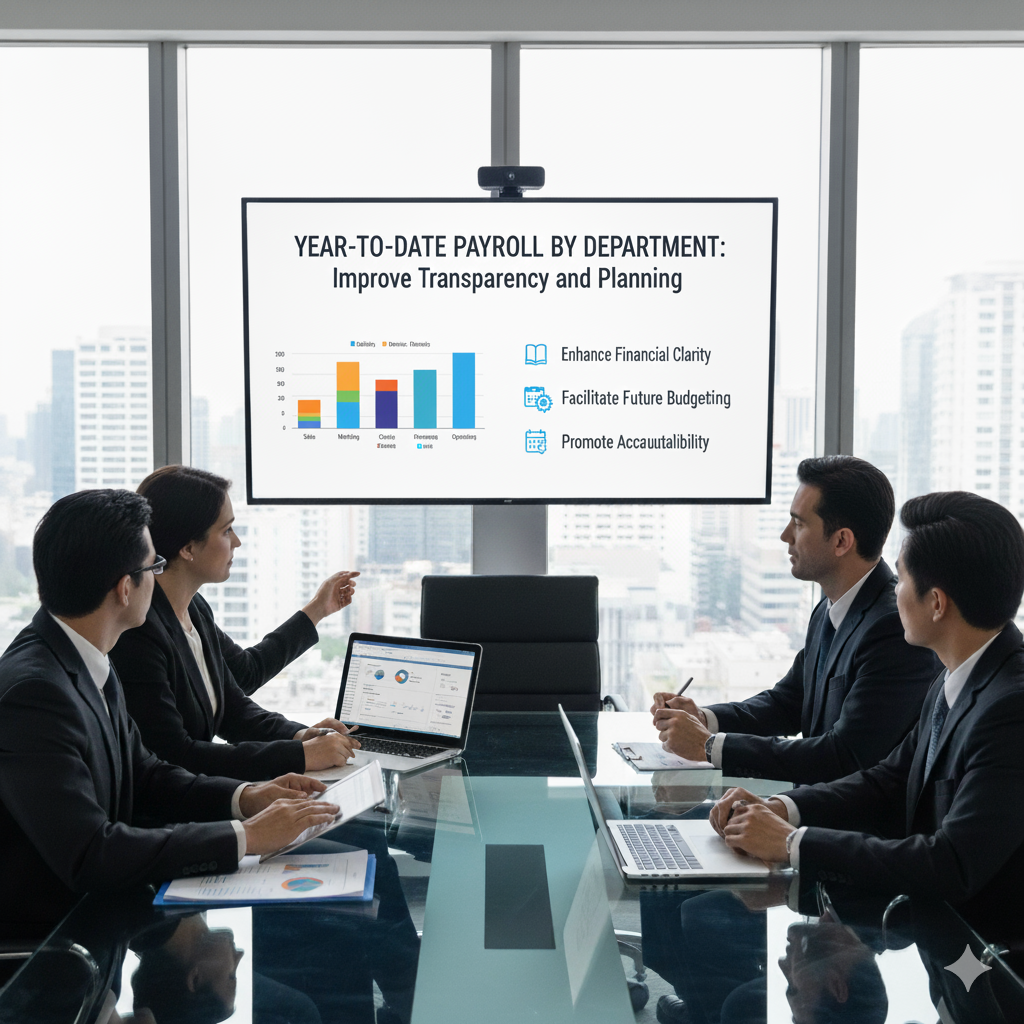Address
Kaypian, San Jose Del Monte City, Bulacan Philippines
Work Hours
Monday to Friday: 8AM - 6PM
Weekend: 10AM - 5PM
Address
Kaypian, San Jose Del Monte City, Bulacan Philippines
Work Hours
Monday to Friday: 8AM - 6PM
Weekend: 10AM - 5PM


Integrated HR. Accurate Payroll.


Integrated HR. Accurate Payroll.

Payroll is one of the largest recurring expenses for most organizations. But reviewing payroll data one pay period at a time can make it hard to see the bigger picture — especially when managing multiple teams or branches.
This is where Year-to-Date (YTD) Payroll by Department reporting comes in. By consolidating payroll data from the beginning of the year and grouping it by department, HR and finance teams gain a clear, comprehensive view of workforce spending.
In this article, we’ll discuss what a YTD Payroll by Department report is, why it’s valuable, and how businesses can use it to improve cost control, budgeting, and overall workforce planning.
A YTD Payroll by Department report is a summary of payroll costs accumulated from January (or the company’s fiscal year start) up to the current period, categorized by department or cost center.
It typically includes:
Modern HRIS (Human Resource Information Systems) automatically generate this report, eliminating the need to manually compile multiple payroll periods into a single document.
This report gives HR and management a full-year view of payroll spending, showing exactly where labor costs are allocated across departments.
With a clear record of YTD spending, finance teams can make better forecasts for the remainder of the year and allocate budgets more accurately.
Seeing which departments consistently have higher overtime or allowances helps management make informed staffing or scheduling decisions.
Having a single, consolidated report makes year-end financial reporting, audits, and government compliance much easier.
By comparing payroll costs with departmental output or performance, leaders can evaluate ROI and adjust strategies as needed.
When using an HRIS, look for YTD reports that include:
Whether you run a private company or manage a Local Government Unit (LGU), this report helps:
A Year-to-Date Payroll by Department report is a powerful tool for HR and finance teams looking to improve cost visibility and make smarter workforce decisions. It consolidates payroll data for the entire year, allowing managers to plan budgets, control costs, and ensure payroll transparency.
If you’re still manually consolidating payroll data from multiple pay periods, now is the perfect time to implement an HRIS & Payroll System with automated YTD reporting capabilities — so you can focus on strategy instead of spreadsheets.